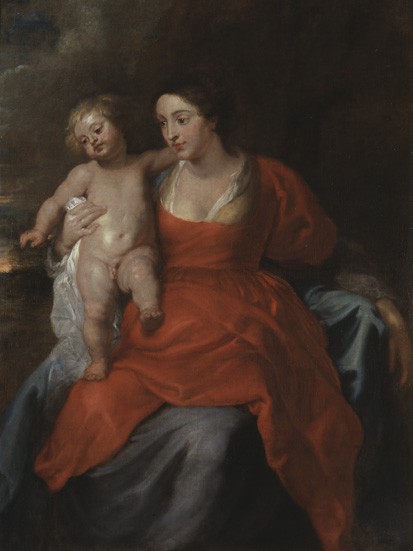Madonna and Child
karta katalogowa kolekcji
Malarstwo
Peter Paul Rubens (1577-1640), workshop
Flanders
after 1630
Oil, canvas
168.5 x 120.5 cm
Wil. 1599
Rubens - the virtuoso painter who loved life in all its warmth, vibrancy, light and mutability - painted portraits and still lives in a manner that was at once sensitive and vigorous. He captured viewers with his skill of transforming traditional religious topics into depictions of remarkable power and expression. One of Rubens's gifts was his ability to work in a team, which is rare in a great painter. Indisputably the greatest painter of his time, he could entrust sections of his works to his co-workers with no detriment to the artistic merit of the work. One the contrary, such cooperation could at times enrich his compositions and always blended with them harmoniously. Rubens had a large melting pot of a workshop, where the invention of many was heated by his genius to create the rare alloy of masterpiece. His system was also determined by practical considerations - only a team could meet the constant flow of commissions. However, admirable quality was always maintained, which is also the case with the Wilanów Madonna and Child painted in Rubens's workshop. The beauty of the painting is in no way deficient to the painter's signed works. Some sections show signs of consummate virtuosity and were probably done in Rubens's hand. The master may have painted the Child himself, given the lightness of its robe and the softness of its hair. The somewhat cooler figure of the Madonna was probably painted by the co-workers in Rubens's workshop.
The scene is set in a 17th-century reality, and the Virgin Mary's magnificent dress is a good specimen of early 17th-century female fashion. The figures exude family warmth typical of Rubens's mature religious work. The theme is emphasized by the freshness and ingenuity of its colour. Rubens, the master dramaturge of painting, uses the brownish tones of the background and the coolness of the greyish-blue and white draperies to offset the splendid flashes of red in the dress.
The downward look of the Madonna with her melancholy smile runs parallel to the line of sight of the Child. The line is further emphasized by the Child's outstretched hand, strongly drawing the viewer's attention beyond the edge of the canvas. This lends a dynamic aspect to the painting, which slips away from the serene constraints of triangular composition and seems to call to be complemented. An explanation for this may be sought in the similarity to some presumed model (the most likely candidate being the Holy Family with St. Anne and St. John in the Metropolitan Museum, New York), where this fluid downward gesture is balanced by the upward gaze of St. John. This broadens the painting's theological message by manifesting St. John's role as the intermediary between heaven and earth. However, even when divorced from this interpretation, the painting is suffused with a lyrical charm; the decision to depict the Madonna and Child without a wider dramatic context is more than compensated for by its attractive air of indecisiveness.
Dominika Walawender-Musz

















